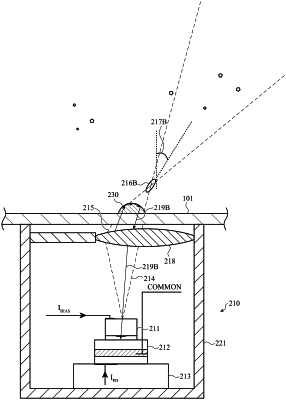| CPC G01B 9/02092 (2013.01) [G01B 9/02045 (2013.01); G01N 15/06 (2013.01); G01N 15/10 (2013.01); G01S 7/4916 (2013.01); G01S 17/58 (2013.01); G01N 2015/0693 (2013.01); G01N 2015/1075 (2013.01)] | 20 Claims |

|
8. A method, comprising:
emitting a beam of coherent light from an optical resonant cavity of a self-mixing interferometry sensor through at least one optically transparent material via at least one optical element to illuminate an object;
receiving a reflection or a backscatter of the beam of coherent light into the optical resonant cavity;
producing a self-mixing signal resulting from self-mixing of the beam of coherent light within the optical resonant cavity;
determining an absolute distance to the object using the self-mixing signal; and
upon determining that the absolute distance corresponds to an area inside of a sensing volume associated with the beam of coherent light:
determining a particle velocity using the self-mixing signal; and
determining a particulate matter concentration using the particle velocity and a particle count.
|